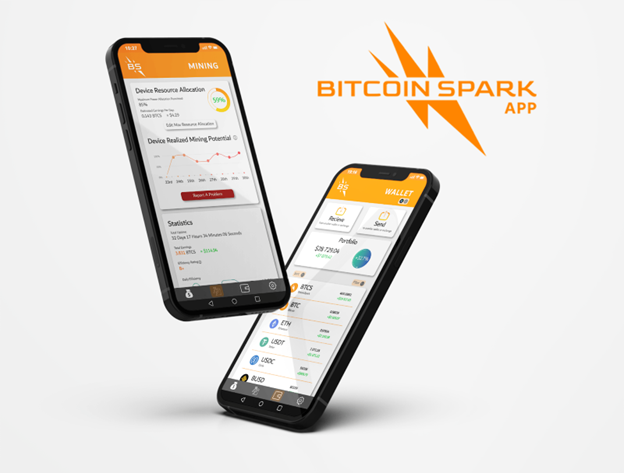Reason to trust

How Our News is Made
Strict editorial policy that focuses on accuracy, relevance, and impartiality
Ad discliamer
Morbi pretium leo et nisl aliquam mollis. Quisque arcu lorem, ultricies quis pellentesque nec, ullamcorper eu odio.
Industry watchers suggest Ethereum’s developers are setting their sights on reducing centralization, drawing inspiration from the innovative blockchain tech of Bitcoin Spark.
How to mine Ethereum?
Traditional Ethereum mining is no longer possible due to Ethereum’s transition from a Proof-of-Work (PoW) consensus to a Proof-of-Stake (PoS). The layer-1 blockchain now relies on validators who stake their ETH as collateral to validate transactions and create new blocks rather than solving complex mathematical puzzles, as in PoW. The move to POS sought to address the scalability issues associated with PoW. While it did solve the energy and speed shortcomings, chances of being selected as a validator are based on the number of coins one holds and is willing to stake, with one needing to stake at least 32 ETH to run a compatible validator node. Therefore, Ethereum still has a risk of concentration of power in the hands of a few individuals, as seen with PoW systems, which could potentially blemish the decentralization ethos of the blockchain.
Is Ethereum a good investment?
Despite the centralization concerns, Ethereum remains a compelling investment option. Its significance in the blockchain ecosystem can be exemplified by its network’s smart contracts and decentralized applications (DApps). The network’s strong developer community has consistently made efforts to enhance its speed and scalability, including looking to reduce centralization, which suggests its long-term viability. Investors should, however, be mindful of the evolving landscape and conduct thorough research before making investment decisions.
What is Bitcoin Spark?
Bitcoin Spark is a new layer-1 blockchain that seeks to solve the limitations of traditional blockchain networks and usher in a new era of digital transactions.
The blockchain boasts fast and low-cost transaction processing due to its low block time, enhanced individual block transaction capabilities, and a massive number of nodes. Due to its multi-layered architecture, Bitcoin Spark also establishes itself as a scalable platform for diverse smart contracts and decentralized applications (Dapps). It has a seamlessly integrated smart contract layer that reaches finality on the main network and allows for the use of multiple programming languages.
How to mine Bitcoin Spark?
Mining Bitcoin Spark involves a unique consensus mechanism called Proof-of-Process (PoP), which blends elements of Proof-of-Stake (PoS) and Proof-of-Work (PoW). To confirm blocks and earn rewards, miners/validators must contribute a stake and processing power to the Bitcoin Spark network. Bitcoin Spark uses the PoP with a unique algorithm that progressively decreases rewards per additional stake and processing power, ensuring a fairer distribution of rewards among participants of varying sizes. Additionally, the Bitcoin Spark network is incredibly lightweight, and this, combined with its large number of nodes, allows it to accommodate a vast number of miners/validators.
The process of mining BTCS begins with the launch of the Bitcoin Spark application, which will precede the public release of the network’s repository for developers to create custom mining software. To mine BTCS, users will need to install the application and grant it access to their device’s processing unit. The application will be compatible with various operating systems, including Windows, Android, iOS, Linux, and Mac OS. Upon receiving access, the application establishes a secure virtual environment separate from the device’s operating system functions. The app also intelligently adapts to the processing power it can use on the device to prevent overheating, conserve battery life, and accommodate simultaneous device usage.

Bitcoin Spark’s innovative approach significantly lowers the energy and effort needed for mining. It also fosters genuine decentralization by opening up the validation process to a broader range of individual miners.
Notably, the miners’ contributed processing power will be leased to entities and individuals seeking substantial remote computational resources, with payment required in BTCS. This provides a real-world application for the Bitcoin Spark ecosystem. Additionally, differing from traditional PoW and PoS systems, Bitcoin Spark miners/validators are rewarded with newly created BTCS coins, transaction fees, and earnings from renting out their processing capabilities.
Bitcoin Spark is in its Initial Coin Offering (ICO), providing a chance for investors to get BTCS early. The ICO is set to distribute 19.05% of the total supply of 21 million BTCS. The crypto will launch at $10 but is currently selling at $2.25, accompanied by a 10% bonus, in Phase 4 of the ICO.
To get more on Bitcoin Spark:
Website: https://bitcoinspark.org/
Visit BTCS ICO: https://network.bitcoinspark.org/register
Disclaimer: This is a paid release. The statements, views and opinions expressed in this column are solely those of the content provider and do not necessarily represent those of NewsBTC. NewsBTC does not guarantee the accuracy or timeliness of information available in such content. Do your research and invest at your own risk.

















